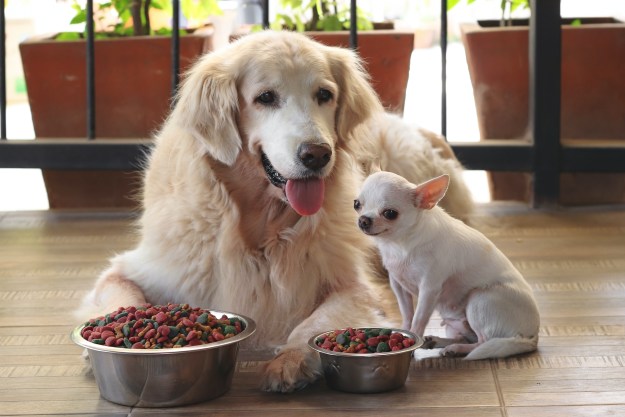Being a responsible dog owner means ensuring that your best friend never leaves the house without a collar with ID and rabies vaccination tags attached. It doesn’t really matter whether dogs enjoy wearing collars or not – it’s a legal requirement in many communities. Moreover, collars with identification are the fastest way to reunite lost pets with their families. To ensure your pup’s collar stays on, it’s vitally important that his collar is sized correctly.
How to measure your dog for a new collar
The only measurement you’ll need when sizing a dog’s collar is the circumference of your pet’s neck. All dogs are different and vary in size, but the guidelines are the same for getting collar measurements:
- You’ll need a cloth measuring tape, or you can simply use a piece of string and measure it against a standard ruler to get the correct neck size.
- Wrap the tape or string around your dog’s neck a few inches down from the head. Pull the tape or string snug but not too tight.
- Before taking a measurement, you should be sure you can fit two fingers between the tape and your dog’s neck. Alternately, you can just add an inch to the measurement for small dogs and two inches for medium and larger breeds.
Once it’s secured on your dog’s neck, check to see that the collar is sized correctly by using the two-finger rule. If it’s a good fit, you should easily be able to slip two fingers between the collar and your dog’s neck.
When shopping for a collar online, you can take measurements yourself and then refer to the store’s online measurement charts to help get the right size. Be aware that different companies may put breeds into different size categories. Generally, as long as you’re in the correct size range, collars can be adjusted to make them tighter or looser as needed.

What about the collar width?
You can’t measure for collar width, but the general rule is, the smaller the dog the narrower the collar. Wider collars are great for large, strong breeds or for sighthounds like greyhounds and whippets who can easily slip out of regular-size collars.
Choosing the best collar design
If the collar is just to hold tags, you don’t have to worry much about durability. However, if you plan on attaching a leash to the collar, you need a collar made of a strong, durable material like nylon or leather. Custom-made collars are great options if jangling tags annoy you or if you’re concerned about losing the tags. For example, GoTags Personalized Nylon collars come with your dog’s name and contact number embroidered onto the collar.
Choose a waterproof collar if you spend a lot of time outdoors with your dog or if your dog loves to swim. These collars are made from materials resistant to water and won’t smell musty when wet. Reflective collars are a great option if you walk your dog around the neighborhood after dark.
Make a habit of checking the collar frequently
It’s extremely important for the health and safety of your dog that the collar is sized correctly. Here are some things to keep in mind:
- When it comes to puppies, the American Humane Association reminds pet owners that it’s vital to check collars weekly. Pups grow quickly, and since collars don’t expand, they need to be adjusted as needed until the dog is fully grown.
- Adult dogs may gain or lose weight throughout their lives and this will impact how the collar fits. Elderly dogs tend to lose weight, so get into the habit of checking the collar periodically.
Your dog’s coat type will also determine how the collar fits. For dogs with thick winter coats, the collar will need to be loosened during cold-weather months. When the coat sheds in the spring and summer, the collar will need to be tightened. Also, check the collar after your dog has a haircut.
Choosing specialty collars
Trainers may recommend humane specialty collars for dogs with specific issues.
Martingale collars are designed for dogs with narrow heads such as greyhounds and whippets. Training experts at the Humane Society of the U.S. also recommend these collars for dogs who learn to back out of regular collars or fearful dogs who may try to escape when out in public.
Headcollars are recommended for strong, energetic dogs who may jump and/or pull on a leash. Because the halter is around the dog’s muzzle instead of the neck, the dog can’t pull on the leash with the full weight of his body.
To be safe and effective, these specialty collars need to be fitted and used correctly. It’s always best to enlist the help of a trainer, who can make sure you and your dog have a pleasant walking experience.
Editors' Recommendations
- 5 surefire ways to keep your dog off your bed and get a good night’s sleep
- Are ‘dog years’ really 7 human years? How to calculate your dog’s age
- How to tell if your older dog’s health decline means the end is near
- Xylitol is dangerous for dogs: 10 surprising products that contain it as a hidden ingredient
- Is your dog barking nonstop? Here’s how to get your noisy pup under control




